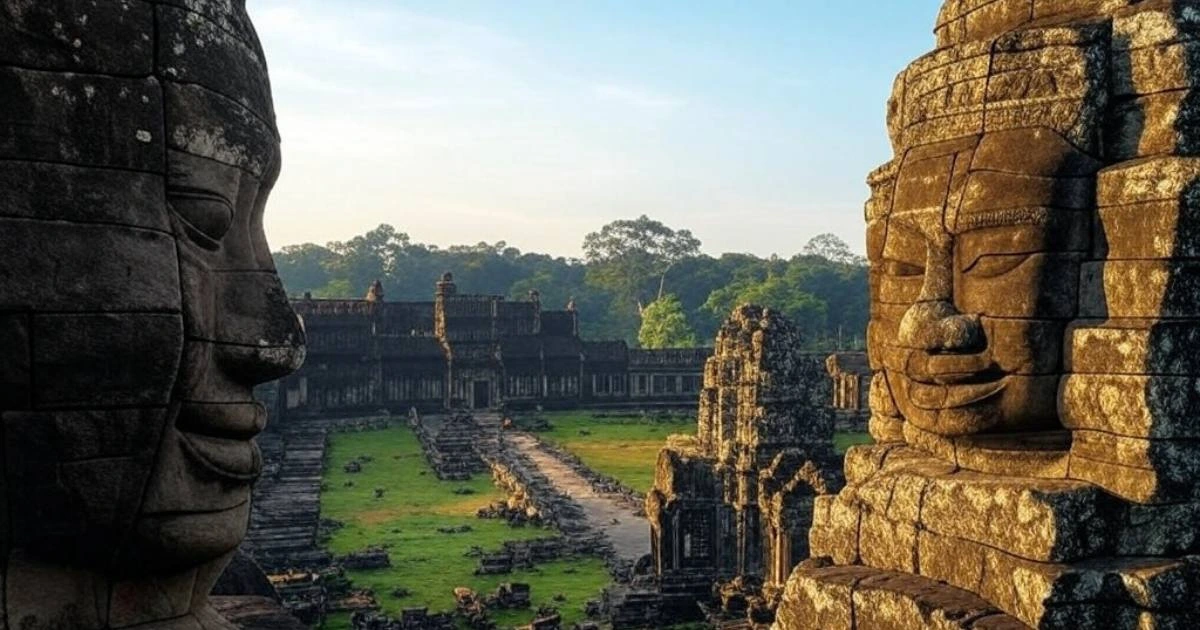Why Siem Reap Captures the Imagination
Siem Reap, the gateway to Cambodia’s ancient temples, is a city where history whispers through every stone and modern charm thrives alongside tradition. Best known as the base for exploring the majestic Angkor Wat, Siem Reap offers more than just ruins it’s a blend of cultural richness, vibrant markets, and a laid-back riverside vibe. Nestled in northwest Cambodia, this destination invites you to step back in time while enjoying contemporary comforts.
This isn’t just a temple-hopping trip; it’s an immersion into a land of resilience and beauty. The aroma of street-side amok, the sight of monks in saffron robes, the sound of cicadas in the jungle Siem Reap weaves a tapestry that’s both spiritual and lively. Whether you’re an archaeology enthusiast, a food lover, or a seeker of peace, Siem Reap promises a journey that’s as profound as it is picturesque. Let’s uncover its allure and plan your Cambodian adventure.
Iconic Temples and Sites
Siem Reap’s temples are its heartbeat, drawing millions to marvel at their grandeur. Here are the must-sees.
Angkor Wat: The Pinnacle of Khmer Art
Angkor Wat, a UNESCO World Heritage Site, is the world’s largest religious monument, built in the 12th century as a Hindu temple before turning Buddhist. Its five lotus-shaped towers rise from a moat, surrounded by intricate bas-reliefs depicting ancient battles and myths. Watch the sunrise here for a magical glow arrive early to beat the crowds.
Bayon Temple: Faces in the Stone
Within the Angkor Thom complex, Bayon Temple stands out with its 216 enigmatic stone faces carved into 54 towers. Built by King Jayavarman VII, it’s a maze of corridors and galleries that feel alive with history. Explore at midday when the light highlights the faces’ serene expressions.
Ta Prohm: The Jungle’s Embrace
Ta Prohm, famously featured in Tomb Raider, is where nature and architecture entwine. Massive tree roots cascade over crumbling walls, creating a hauntingly beautiful scene. Wander its shaded paths to feel the jungle reclaiming its past bring a hat, as it’s less sheltered than other sites.
Beyond the Temples: Siem Reap’s Hidden Gems
Siem Reap’s charm extends beyond Angkor, with natural and cultural escapes.
Floating Villages of Tonle Sap
A boat trip to the floating villages on Tonle Sap Lake reveals a unique way of life. Homes, schools, and markets bob on the water, adapting to seasonal floods. Visit Chong Khneas or Kompong Phluk to see stilt houses and fish farms opt for a local guide to support the community.
Phare Cambodian Circus: Cultural Flair
Phare, a nonprofit circus, showcases acrobatics, music, and storytelling rooted in Cambodian culture. Performances blend tradition with modern flair, offering a night of entertainment that supports local artists. Book tickets early shows sell out fast.
Savoring Siem Reap’s Culinary Scene
Cambodian cuisine in Siem Reap is a delightful fusion of flavors, influenced by its neighbors and history.
Dishes to Relish
Try amok trey, a creamy fish curry steamed in banana leaves, or lok lak, stir-fried beef with a tangy sauce served with rice. Num banh chok, a rice noodle soup with green fish gravy, is a breakfast staple. For dessert, kralan sticky rice with coconut in bamboo offers a sweet treat. Pair meals with fresh coconut water.
Pub Street: A Foodie Hub
Pub Street, in the heart of Siem Reap, buzzes with restaurants and bars. Sample Khmer dishes at places like Khmer Kitchen, or indulge in street food like grilled skewers and spring rolls. Night markets nearby sell souvenirs and snacks perfect for a late-night stroll.
Practical Tips for Visiting Siem Reap
A little preparation ensures a smooth Siem Reap experience. Here’s the guide.
Best Time to Visit
November to February brings dry, cool weather ideal for temple tours. March to May is hot, while June to October brings rain but fewer crowds and lush greenery. Avoid peak holidays like Khmer New Year if you prefer quieter visits.
Getting Around
Tuk-tuks are the king of transport hire one for temple runs or city hops, negotiating fares upfront (around $15–20/day for Angkor). Bicycles are great for short trips, while motorbikes suit the adventurous. Walking works in the town center.
Where to Stay
Stay in a guesthouse or boutique hotel near Pub Street for convenience options like The Privilege Floor or Soria Moria offer charm. Luxury seekers can opt for riverside resorts like Park Hyatt. Book ahead during peak season.
Hidden Corners to Discover
Siem Reap has off-the-beaten-path spots that reward the curious.
Banteay Srei: The Gem Temple
An hour from town, Banteay Srei dazzles with its pink sandstone and intricate carvings. Smaller than Angkor Wat, it’s a jewel of Khmer art, often less crowded. Morning visits highlight its delicate details.
Angkor Silk Farm: Cultural Insight
Visit the Artisans Angkor Silk Farm to see silk production from cocoon to cloth. Workshops showcase traditional weaving, and the on-site shop sells authentic scarves supporting local artisans adds meaning to your trip.
Why Siem Reap Leaves a Lasting Impression
Siem Reap is a city that touches the soul its temples stand as testaments to a glorious past, its people exude warmth, and its landscapes soothe the spirit. Whether you’re marveling at Angkor’s sunrise, drifting through floating villages, or tasting amok by lantern light, Siem Reap offers a journey that’s both humbling and uplifting.
Ready to explore Cambodia’s temple haven? Siem Reap awaits with its ancient stones and vibrant spirit start planning your trip today.
